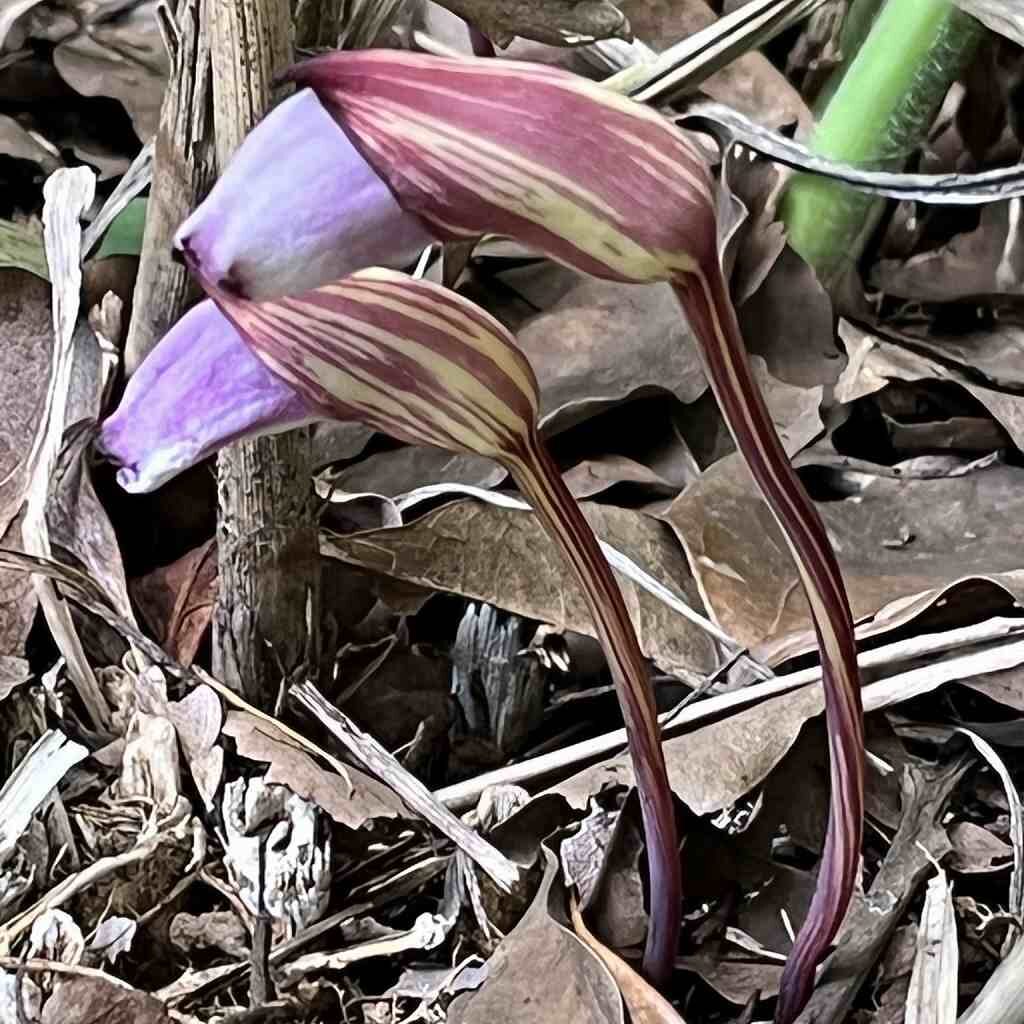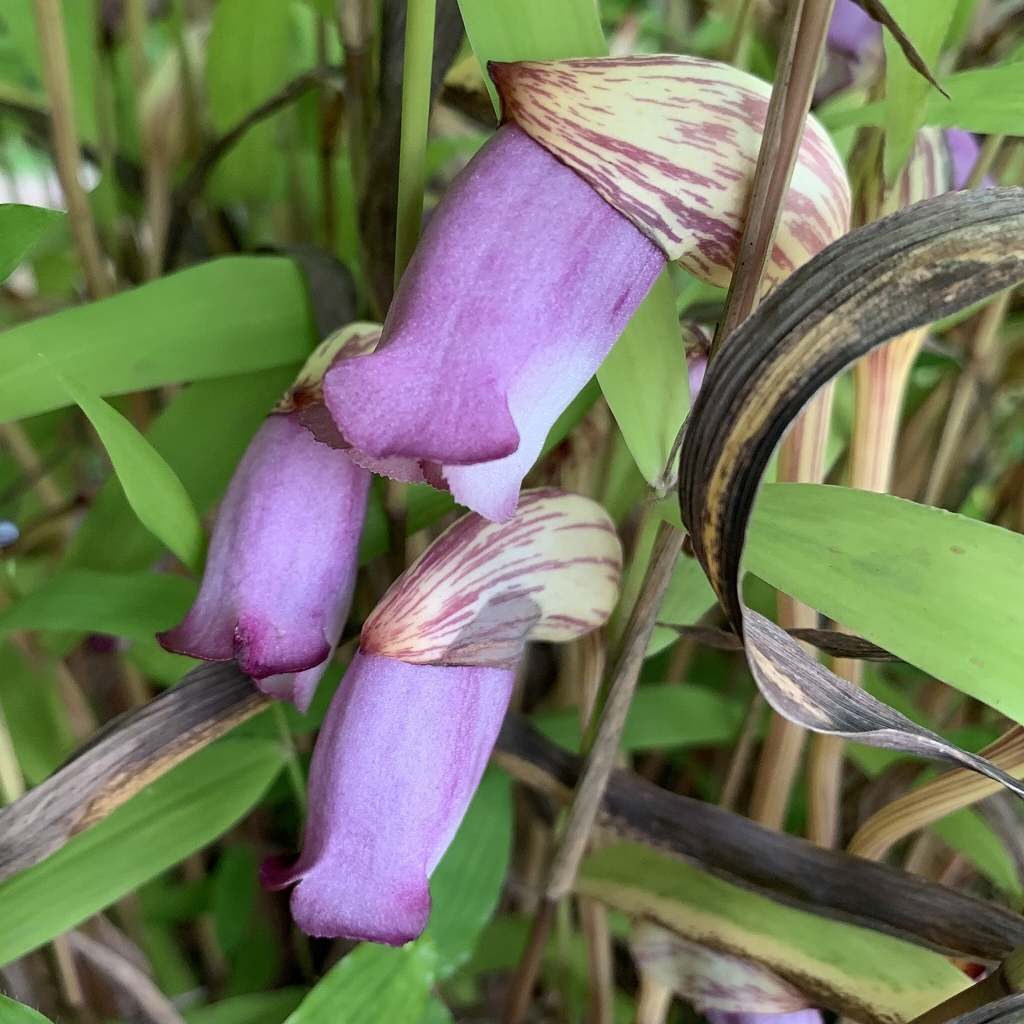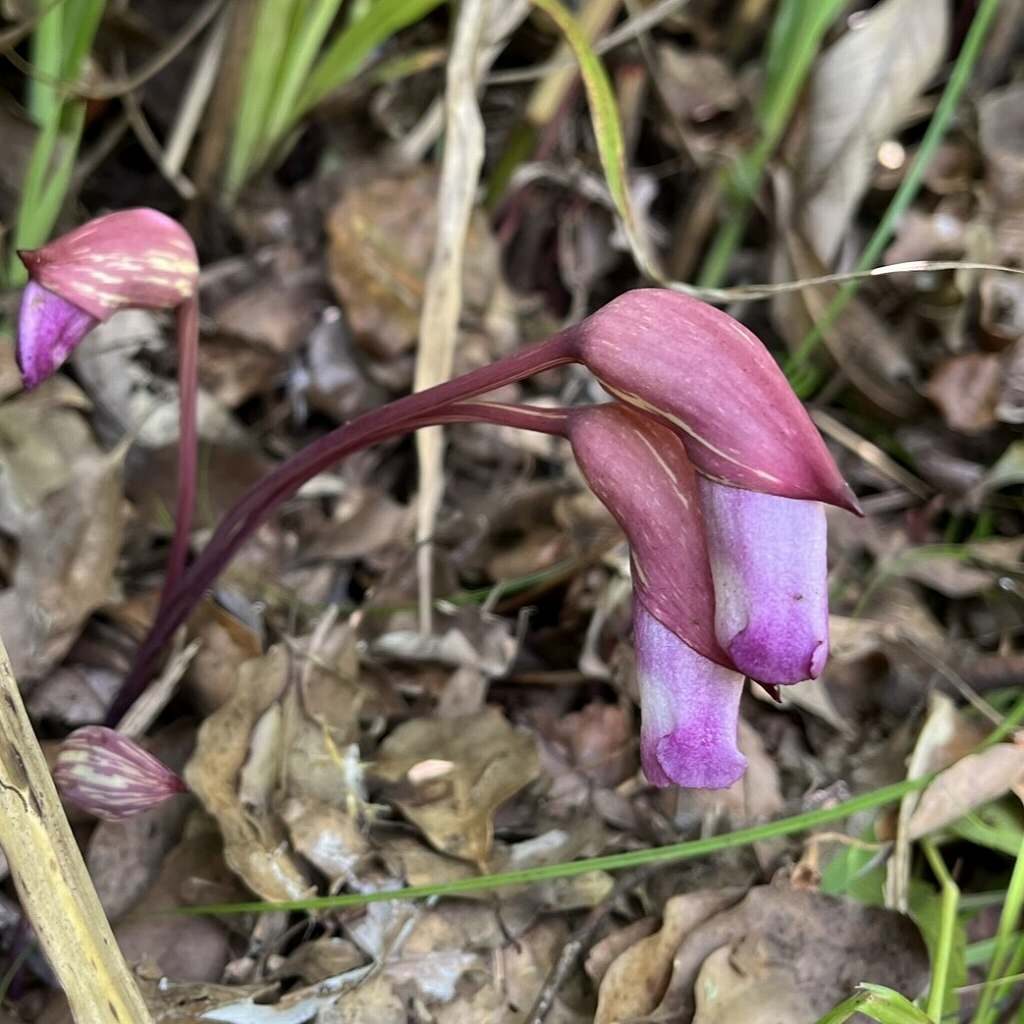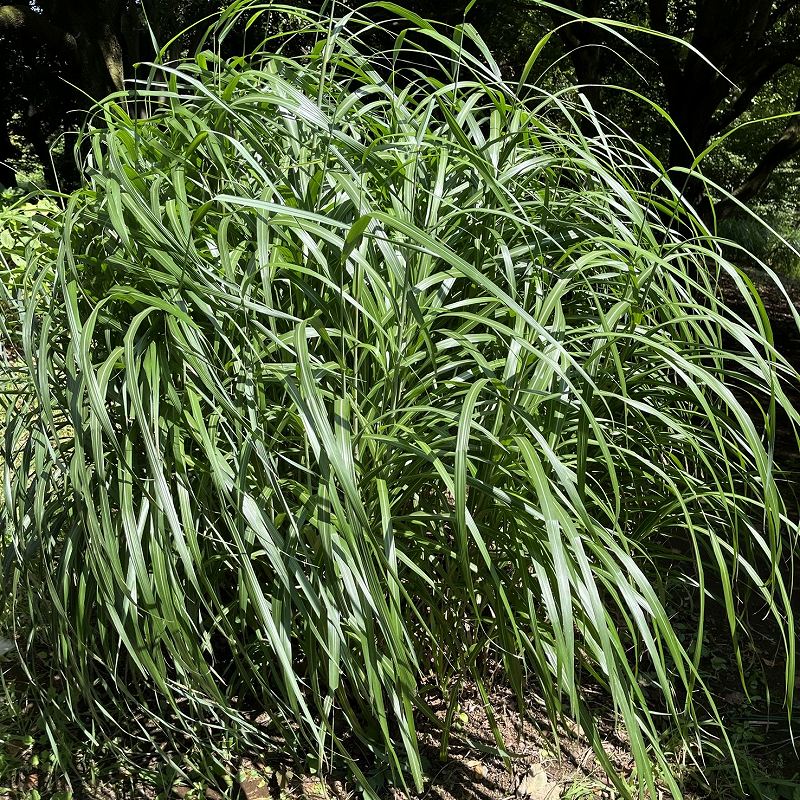ナンバンギセルはイネ科の水陸稲、ススキ、サトウキビなどに寄生。和名は花の姿に由来し、俯くように咲くので「思い草」とも呼ばれます。
Aeginetia is parasitic on rice, pampas grass, and sugar cane etc. in the Poaceae family. Their Japanese name is derived from the shape of the flower, and they are also called “pensive plant” because the flowers bloom like they are looking down.
【仮名】ナンバンギセル
【和名】南蛮煙管
【英名】Aeginetia
【学名】Aeginetia indica
【誕生】09/ 22
【開花】08, 09, 10月
【花色】White, Purple, Violet






ナンバンギセル
ナンバンギセルの生態
ナンバンギセルはハマウツボ科の1年草です。アジア東部の温帯から南部の熱帯にかけて分布し、イネ科の水陸稲、ススキ、サトウキビのほか、ミョウガ、ギボウシ、ユッカなどに寄生。植物でありながら葉緑素がなく、光合成できないため、宿主の根から養分を奪い取って育ちます。
ナンバンギセルの名前
ナンバンギセルの和名の由来は昔、欧州が「南蛮」と呼ばれ、その南蛮人が使っていた「煙管」(喫煙具)に花の姿が似ていたから。そのため「煙管草」という別名もあります。ラテン語の属名は7世紀のギリシャの医師パウルス・アエギナに由来し、種名は「インドの」という意味。
ナンバンギセルの姿形
ナンバンギセルは茎が短く、葉も小さく目立たないため、一見何もないところから花柄が立ち上がります。萼筒は舟形で先端が尖り、花筒は唇形で先端が浅く5裂。雄しべは4本で黄色の毛が密生し、雌しべは柱頭が黄色の球形です。花後は卵形の蒴果の中に微細な黄色の種子を形成。
ナンバンギセルの種類
ナンバンギセルの在来種は花柄と萼筒が赤褐色または黄白色との縞模様。花弁は紫色のほか、白色や桃色もあります。変種の「姫南蛮煙管」は関東のクロヒナスゲに寄生し、花弁が青紫色。近縁の「大南蛮煙管」は山地のカリヤスなどに寄生し、萼筒が尖らず、花弁に鋸歯が入ります。
ナンバンギセルの評価
ナンバンギセルは古くから日本人に親しまれ、『万葉集』ではススキの古名「尾花」とともに古名「思ひ草」で詠まれ、俳句でも秋の季語として詠まれました。花が俯くように咲くから花言葉も「物思い」。一方、イネなどの作物にとっては寄生によって減収するので有害な雑草です。
Aeginetia
Ecology of Aeginetia
Aeginetia is an annual plant belonging to the family Orobanchaceae. Distributed from the temperate zone of eastern Asia to the tropical zone of southern Asia, they are parasitic on rice, pampas grass and sugar cane in the Poaceae family, as well as Japanese ginger, hosta, and yucca. Although they are plants, they lack chlorophyll and cannot photosynthesise, so they grow by taking nutrients from the roots of its host.
Name of Aeginetia
The origin of the name “foreign smoke pipe” which is Aeginetia in Japanese comes from the fact long ago that the shape of the flower resembled the “smoke pipe” used by the European. For this reason, it is also known as “tobacco grass”. The Latin genus name comes from the 7th-century Greek physician Paulus Aegineta, and the species name means “Indian”.
Appearance of Aeginetia
The Aeginetia has short stems and small leaves, so the flower stalk rises out of seemingly nothing. The calyx tube is boat-shaped with a pointed tip, and the flower tube is lip-shaped with a shallow tip and 5 lobes. There are 4 stamens with dense yellow hairs, and the pistil has a yellow spherical stigma. After flowering, fine yellow seeds are formed in egg-shaped capsules.
Types of Aeginetia
The native species of Aeginetia has reddish-brown or yellowish-white stripes on the flower stalk and calyx tube. The petals are purple, white, and pink. A variant, “Small Aeginetia”, parasitizes the Kanto region’s Carex gifuensis Franch, and has bluish-purple petals. The closely related “Big Aeginetia” parasitizes in mountainous caryas, and has serrated petals without sharp calyx tubes.
Evaluation of Aeginetia
Aeginetia has been familiar to Japanese people since ancient times, and in the “Manyoshu”, the ancient name of Aeginetia was recited together with the old name of pampas grass and even in haiku, it was used as a season word for autumn. The flower language is also “pensive” because they bloom like they are looking down. On the other hand, it is a harmful weed for crops such as rice because it reduces yields due to parasitism.


